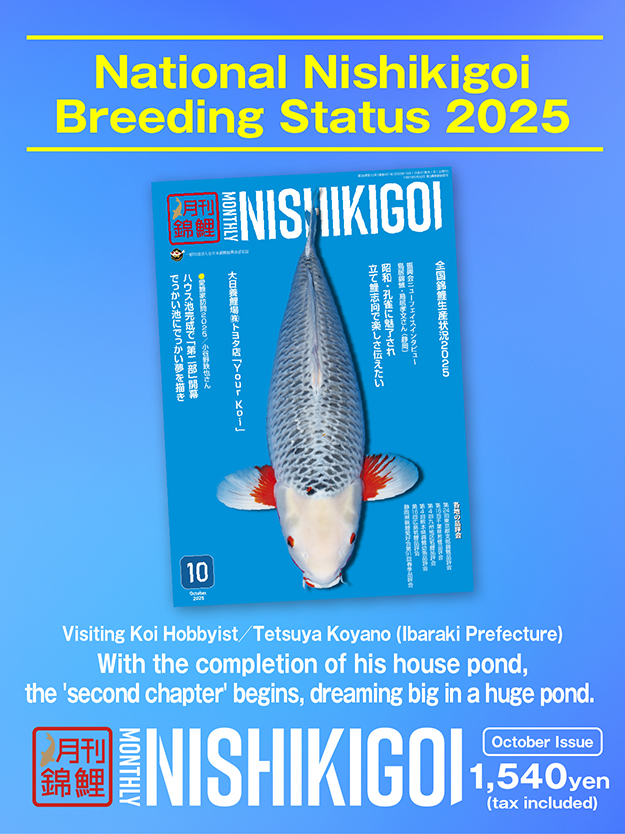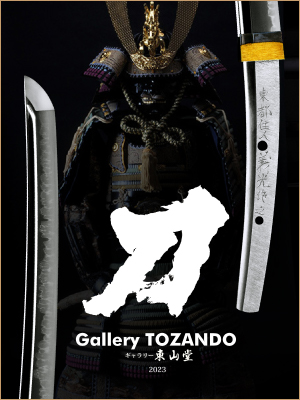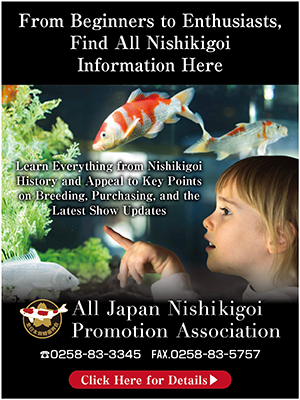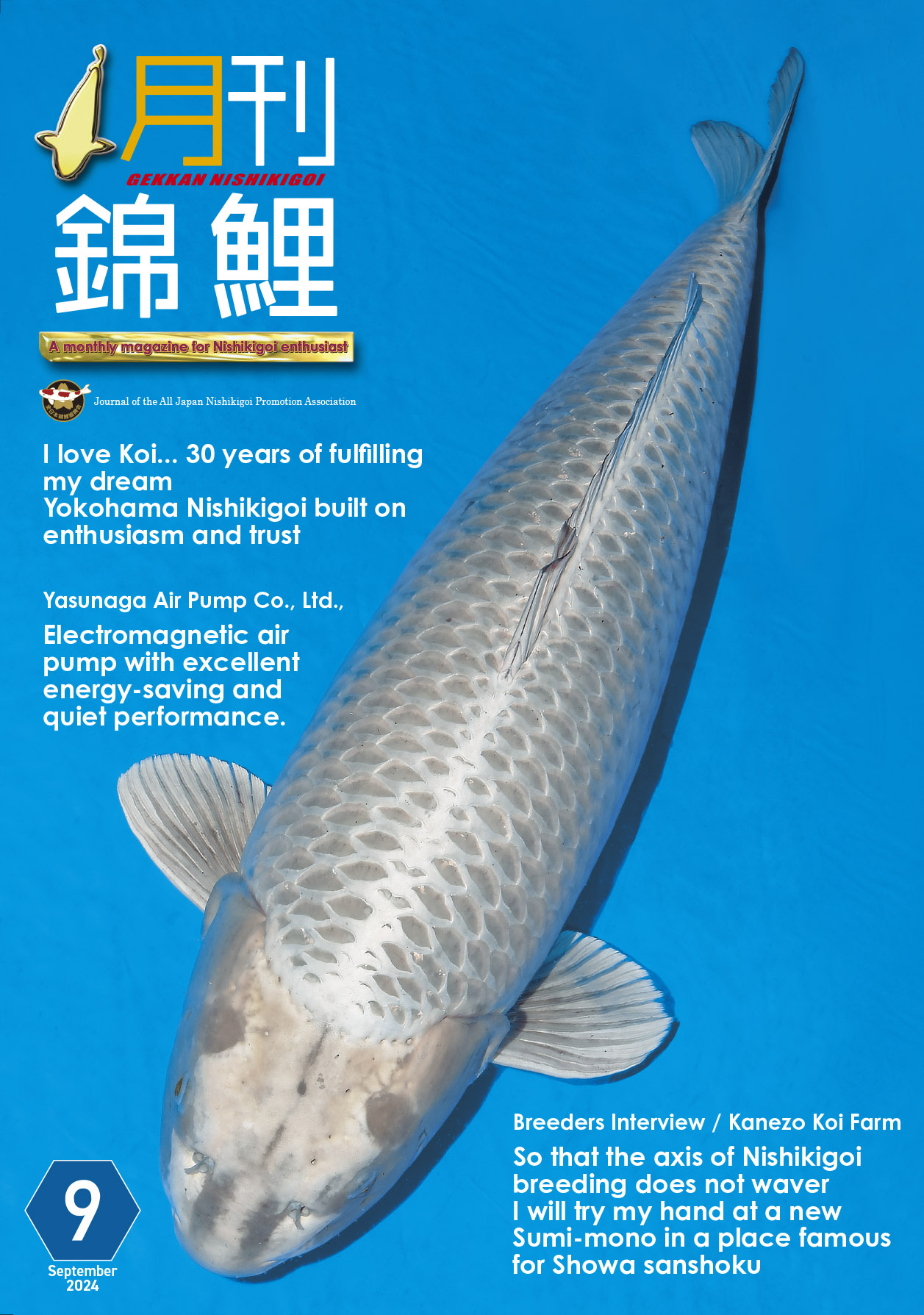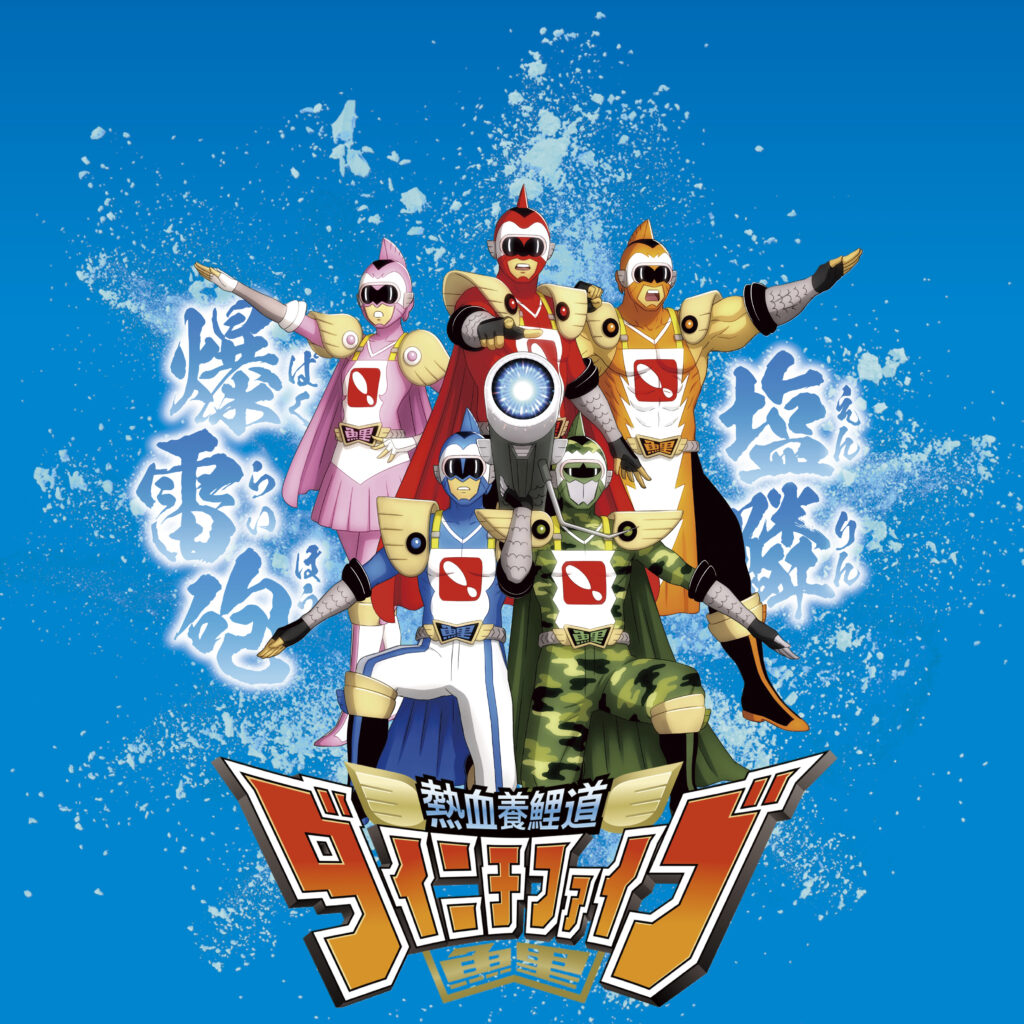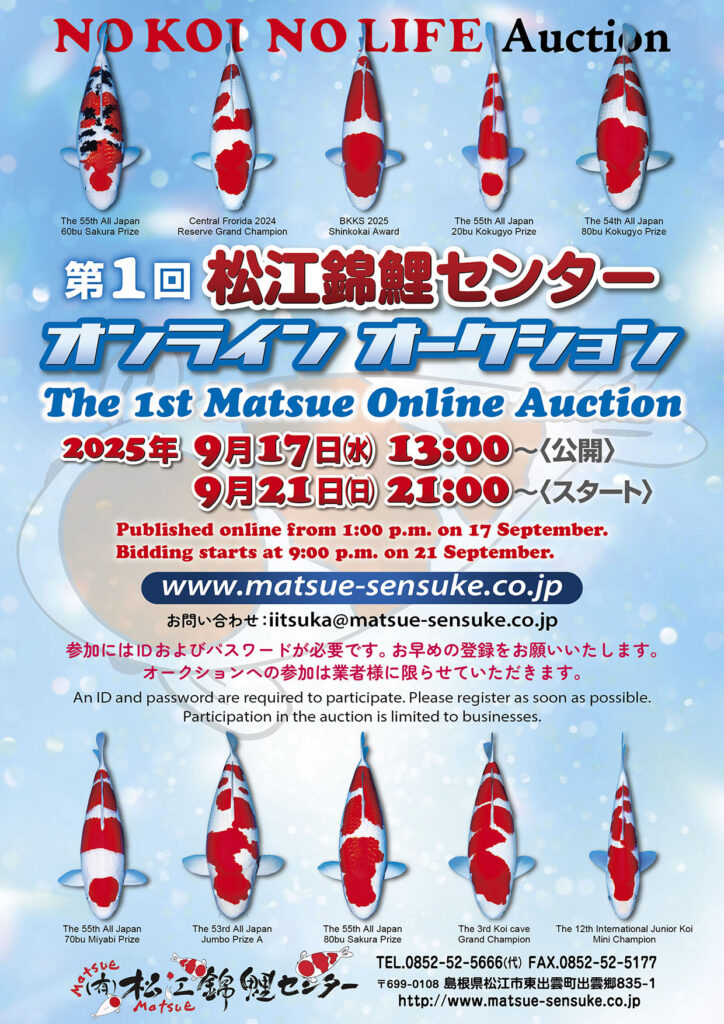Sakai System wins National Fish Award for kohaku in Matsue
Although showa are scarce in number, they do indeed exist
ー Are the kohaku also from the Sakai line?
Tamaura: Until recently, yes. The Kohaku that won the Kokugyo Prize (Picture①) as young koi and tosai was a female from Matsue’s stock. We’ve always worked with the Sakai line, but since the one we got from Matsue grew well and reached 3 years old last year, we’ve been incorporating that line into our breeding for about four years now.
ー Is that for improving the body shape?
Tamaura: Yes, exactly. During the time when Koi Herpes Virus (KHV) and hole disease were causing a lot of trouble, there was a period when we couldn’t introduce new parent koi. As a result, the bloodlines became too closely related, making it difficult to find suitable matches for breeding. Since we started introducing new parents again, things have gradually improved. But with kohaku, it’s still a bit unclear (laughs).
Kuninori: With so many big players producing kohaku, the challenge is how to create something unique and stand out.
ー Kohaku is indeed produced nationwide, and many breeders are putting a lot of effort into it. What about Showa? In recent years, they’ve won awards like the Kokugyo Prize at the tosai shows and the Miyabi Prize at the All Japan Young Koi Show (Picture⑩).
Tamaura: Last year, we had a good batch, so I think this year’s two-years old koi are quite good. However, for the past few years, we haven’t been able to get the offspring we hoped for, as the parent koi we relied on haven’t been hatching properly.
ー What line are the showa from?
Tamaura: It’s from the Showa that Sakai used to breed, and I believe they were crossed with a male from Dainichi. Then, we used the offspring from that as female parent and crossed them with a male from Isa. We had good results for about two years, but after that, the hatching success rate dropped.
Kuninori: We’ve tried various management techniques, like adjusting water temperature in winter, but it’s been tough.
ー In such cases, do you change the timing of breeding? For example, switching from the first crop to the second crop?
Tamaura: For showa, we only do the first crop.
ー Why is that? Is it because you don’t need as many?
Tamaura: It’s not so much about not needing many, but more about the schedule. If we did the second or third crop, we’d be too busy with other selections to focus on the black fry selection.
Kuninori: During the busy period of the first selection, we set up for the second crop, but at that time, we just don’t have the time to do the black fry selection.
ー I see. So it’s a matter of manpower.
Tamaura: Also, I feel like the patterns come out better in the first crop. It might be the same pattern, but the appearance looks different between summer and early spring.
Kuninori: Another reason we stopped doing the second crop is that it’s too hot during that period. Even if we did the black fry selection and released them in the evening, it didn’t turn out well. It’s just not worth it during the busy season. That was probably the main reason we stopped.
Our schedule is often determined by such factors, and if we revisited it, things might change. But for the past few years, it’s been set. We’ve also stopped doing the second crop for kohaku.
ー So, does that mean the second and third crops are only for sanshoku?
Tamaura: That and one batch of kujaku. I’ve always liked kujaku, so we keep one batch (laughs). There used to be a kujaku from Yamada, and the current line is somewhat descended from that. It’s not so much about the pattern but more about the shine. Nowadays, we cross it with a male from Omosako Koi Farm, but the kujaku area seems to be shrinking.
-50部雅賞-大正三色/梁配辉-取扱/成田養魚園㈱ 取次/海港錦鯉集団-edited-scaled.jpg)
50bu Miyabi Prize, Taisho Sanshoku / Liang Peihui
Handled: Narita Koi Farm Agent: Haigang Nishikigoi Group


